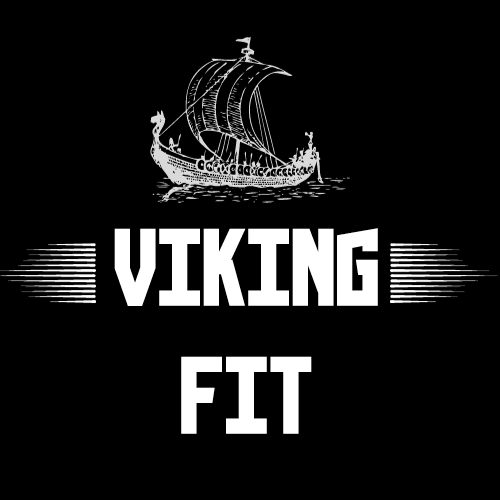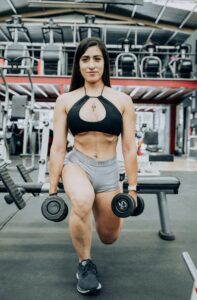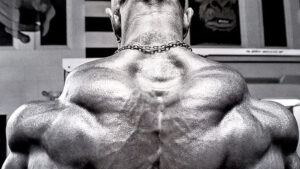Introduction:
Welcome to a comprehensive exploration of female muscle anatomy, where we embark on a journey to unravel the complexities of the human body’s muscular system as it pertains specifically to women. In a world where fitness, strength, and health are paramount, understanding the unique nuances of female musculature is not only enlightening but also empowering.
Muscles are the engine driving our every movement, from the simplest tasks to the most demanding physical feats. In this guide, we’ll venture into the depths of anatomy textbooks and scientific research to shed light on the structure, function, and significance of muscles in the female body. Whether you’re a fitness enthusiast, athlete, healthcare professional, or simply someone intrigued by the marvels of human physiology, this exploration promises to be both informative and enriching.
Throughout history, the portrayal of female strength and athleticism has often been overshadowed by stereotypes and misconceptions. But as we delve into the science behind female muscle anatomy, we’ll dispel myths, challenge preconceptions, and celebrate the incredible capabilities of women’s bodies.
So, join us as we journey through the intricate web of muscle fibers, hormonal influences, and training strategies that shape female musculature. By the end of this exploration, you’ll not only have a deeper understanding of female muscle anatomy but also a newfound appreciation for the remarkable resilience and power inherent in every woman’s body.
Prepare to be inspired, informed, and empowered as we navigate the terrain of female muscle anatomy together. Let’s dive in and discover the wonders that lie beneath the surface of women’s strength and vitality.
Table of Contents
Understanding Female Muscle Anatomy
Different Types of Muscles in the Female Body:
Muscles are the powerhouse of the human body, facilitating movement, supporting structure, and enabling vital functions. In the female body, muscles come in various forms, each with distinct characteristics and roles. Let’s explore the different types of muscles found in women and their significance in overall health and well-being.
- Skeletal Muscles:
- Skeletal muscles are perhaps the most familiar type, responsible for voluntary movements such as walking, running, and lifting weights.
- These muscles are attached to bones via tendons and work in pairs, contracting and relaxing to produce motion around joints.
- In the female body, skeletal muscles play a crucial role in maintaining posture, supporting the skeleton, and executing precise movements.
- Examples of skeletal muscles include those in the arms, legs, abdomen, and back, which contribute to daily activities and physical performance.
- Smooth Muscles:
- Smooth muscles are involuntary muscles found in the walls of internal organs, blood vessels, and airways.
- Unlike skeletal muscles, smooth muscles are not under conscious control and function autonomously to regulate various bodily processes.
- In the female body, smooth muscles play vital roles in processes such as digestion, circulation, and reproductive function.
- Examples of organs with smooth muscles include the stomach, intestines, uterus, and blood vessels, where their contractions help propel substances and maintain homeostasis.
- Cardiac Muscles:
- Cardiac muscles are exclusive to the heart and are responsible for its continuous pumping action.
- These muscles possess unique characteristics that enable them to contract rhythmically and efficiently pump blood throughout the body.
- Unlike skeletal muscles, cardiac muscles exhibit involuntary control, regulated by specialized cells within the heart’s conduction system.
- In the female body, cardiac muscles play a crucial role in maintaining cardiovascular health, ensuring adequate blood flow to organs and tissues.

Key Muscle Groups in Females:
- Upper Body Muscles: a. Deltoids: Located at the shoulders, the deltoid muscles are responsible for raising and rotating the arms. Well-developed deltoids contribute to shoulder stability and overall upper body strength. b. Pectorals (Pecs): The pectoral muscles, found in the chest region, are involved in movements such as pushing, hugging, and flexing the arms. Strengthening the pectorals enhances chest definition and upper body aesthetics. c. Biceps: Located in the front of the upper arms, the biceps muscles are responsible for bending the elbow and supinating the forearm. Strengthening the biceps improves arm strength and enhances the appearance of toned arms. d. Triceps: Situated at the back of the upper arms, the triceps muscles are involved in extending the elbow and straightening the arm. Well-developed triceps contribute to overall arm definition and strength.
- Core Muscles: a. Rectus Abdominis: Commonly known as the “abs,” the rectus abdominis muscles run vertically along the front of the abdomen and are responsible for trunk flexion. Strengthening the rectus abdominis improves core stability and supports proper posture. b. Obliques: Found on the sides of the abdomen, the oblique muscles are responsible for trunk rotation and lateral flexion. Strengthening the obliques enhances waist definition and improves functional movement patterns. c. Transverse Abdominis: Situated deep within the abdomen, the transverse abdominis muscles act as a natural corset, providing stability and support to the spine and pelvis. Strengthening the transverse abdominis improves core strength and reduces the risk of lower back pain.
- Lower Body Muscles: a. Quadriceps: Located at the front of the thighs, the quadriceps muscles are responsible for extending the knee and straightening the leg. Strengthening the quadriceps improves lower body strength and supports activities such as walking, running, and jumping. b. Hamstrings: Situated at the back of the thighs, the hamstring muscles are responsible for bending the knee and assisting in hip extension. Strengthening the hamstrings enhances lower body stability and reduces the risk of injury. c. Glutes: The gluteal muscles, including the gluteus maximus, medius, and minimus, are located in the buttocks and play a crucial role in hip extension, abduction, and rotation. Strengthening the glutes improves overall lower body power, stability, and aesthetics.
Hormonal Influence on Female Muscle Development:
- Estrogen:
- Estrogen is the primary female sex hormone responsible for regulating the menstrual cycle, reproductive function, and bone health.
- Estrogen also plays a role in muscle physiology by promoting protein synthesis, muscle repair, and glycogen storage.
- Higher levels of estrogen during the follicular phase of the menstrual cycle may enhance muscle recovery and performance, while lower levels during the luteal phase could lead to increased muscle soreness and fatigue.
- Progesterone:
- Progesterone is another female sex hormone that works in tandem with estrogen to regulate the menstrual cycle and support pregnancy.
- While progesterone’s direct effects on muscle development are less understood, it may influence muscle metabolism and glycogen utilization.
- Fluctuations in progesterone levels during the menstrual cycle can affect energy levels, water retention, and exercise tolerance in women.
- Testosterone:
- Although testosterone is often associated with male physiology, women also produce small amounts of this hormone in the ovaries and adrenal glands.
- Testosterone plays a role in muscle protein synthesis, strength gains, and the development of lean muscle mass.
- Women with higher testosterone levels may experience greater muscle growth, strength, and athletic performance compared to those with lower levels.
Strength Training and Female Muscle Growth:
- Muscle Hypertrophy vs. Muscle Tone:
- Muscle hypertrophy refers to the increase in muscle size that occurs in response to resistance training. Contrary to popular belief, women have the same potential for muscle hypertrophy as men, albeit with differences in hormonal profiles.
- Muscle tone, on the other hand, refers to the firmness and definition of muscles at rest. Strength training can improve muscle tone by increasing muscle mass and reducing body fat, resulting in a leaner, more sculpted appearance.
- Hormonal Response to Strength Training:
- Testosterone, the primary male sex hormone, is often associated with muscle growth. While women have lower testosterone levels than men, they still experience increases in testosterone in response to strength training.
- Growth hormone and insulin-like growth factor 1 (IGF-1) are other hormones involved in muscle growth and repair. Strength training stimulates the release of these hormones, promoting muscle hypertrophy and recovery.
- Women may experience hormonal fluctuations throughout the menstrual cycle, with higher testosterone levels during the follicular phase potentially enhancing muscle-building effects of strength training. female muscle growth A Comprehensive Guide
- Progressive Overload and Muscle Adaptation:
- Progressive overload is a fundamental principle of strength training that involves gradually increasing the resistance or intensity of exercises over time. This progressive challenge stimulates muscle fibers to adapt and grow stronger.
- Women can achieve muscle growth and strength gains by progressively overloading their muscles through a variety of resistance training modalities, including free weights, machines, bodyweight exercises, and resistance bands.
- Varying the intensity, volume, and frequency of workouts can prevent plateaus and optimize muscle adaptation in women, leading to continued improvements in strength and muscle tone.
Common Female Muscle Anatomy Questions Answered:
- Are Women Naturally Less Muscular Than Men?
- Can Women Build Muscle as Effectively as Men?
- How Does Pregnancy Affect Muscle Anatomy?
Maintaining Female Muscle Health:
- Proper Nutrition:
- Adequate nutrition is paramount for muscle health, providing essential nutrients for growth, repair, and maintenance. Women should aim to consume a balanced diet rich in protein, carbohydrates, healthy fats, vitamins, and minerals.
- Protein is particularly important for muscle repair and synthesis. Women should aim to include high-quality protein sources such as lean meats, poultry, fish, eggs, dairy, legumes, and plant-based proteins in their meals.
- Carbohydrates provide the energy needed for workouts and replenish glycogen stores in muscles. Opt for complex carbohydrates like whole grains, fruits, vegetables, and legumes to support sustained energy levels.
- Healthy fats, such as those found in avocados, nuts, seeds, and olive oil, are essential for hormone production, cell membrane function, and inflammation control, all of which are crucial for muscle health.
- Hydration:
- Staying hydrated is essential for optimal muscle function and recovery. Water plays a vital role in nutrient transport, waste removal, and maintaining electrolyte balance within muscle cells.
- Women should aim to drink an adequate amount of water throughout the day, especially before, during, and after exercise. Individual fluid needs may vary depending on factors such as body size, activity level, and environmental conditions.
- Regular Exercise:
- Consistent physical activity is key to preserving muscle mass, strength, and function. Incorporate a combination of aerobic exercise, strength training, flexibility, and balance exercises into your routine to maintain overall fitness and muscle health.
- Aim for at least 150 minutes of moderate-intensity aerobic activity or 75 minutes of vigorous-intensity aerobic activity per week, along with muscle-strengthening activities on two or more days per week.
- Strength training exercises that target all major muscle groups help prevent muscle loss, improve bone density, and enhance metabolic health. Include a variety of exercises such as squats, lunges, push-ups, rows, and planks to maintain overall muscle balance and function.
- Adequate Rest and Recovery:
- Giving your muscles time to rest and recover is essential for optimizing performance and preventing overuse injuries. Aim for 1-2 rest days per week to allow your muscles to repair and rebuild.
- Get enough sleep each night, as sleep plays a crucial role in muscle recovery, hormone regulation, and overall health. Aim for 7-9 hours of quality sleep per night to support muscle growth and repair.
- Listen to Your Body:
- Pay attention to your body’s signals and adjust your exercise routine accordingly. If you experience pain, fatigue, or excessive soreness, it may indicate that you need to modify your workouts, take a rest day, or seek professional guidance.
- Avoid overtraining, which can lead to muscle fatigue, burnout, and increased risk of injury. Listen to your body’s need for rest and recovery to maintain long-term muscle health and overall well-being. Top 10 Signs of Gaining Muscle In Female : A Comprehensive

Conclusion:
Understanding female muscle anatomy is not only essential for athletes and fitness enthusiasts but for anyone interested in optimizing their health and wellness. By grasping the fundamentals of female musculature, individuals can tailor their exercise routines, nutrition plans, and overall lifestyle choices to support optimal muscle function and development.
By providing valuable insights into female muscle anatomy, this guide aims to empower women to take control of their fitness journey and achieve their desired health and strength goals.
Remember, knowledge is power, and by understanding the intricacies of female muscle anatomy, you’re one step closer to unlocking your full potential.we gain a deeper understanding of the body’s remarkable capabilities and empower ourselves to prioritize health, fitness, and well-being.




